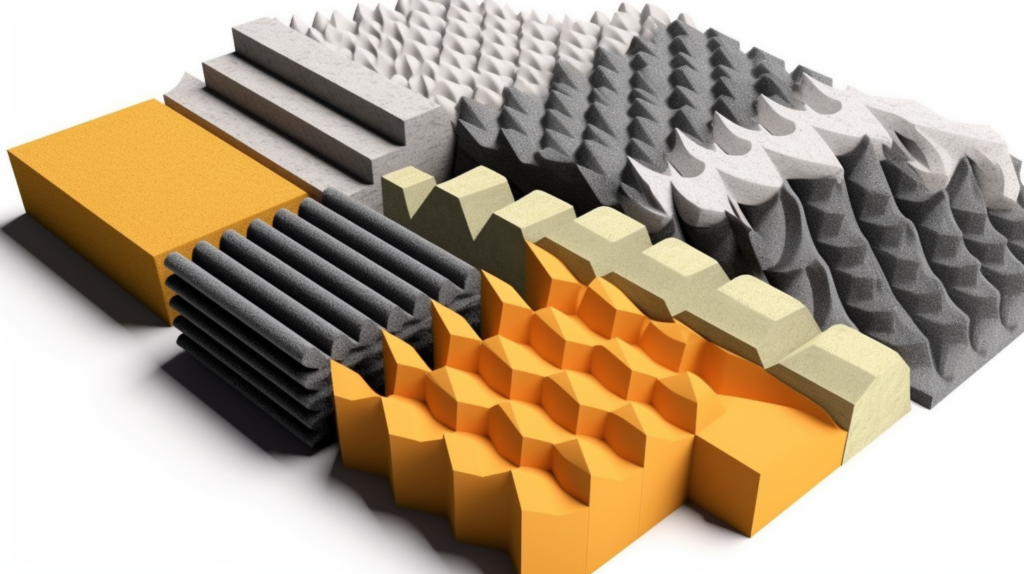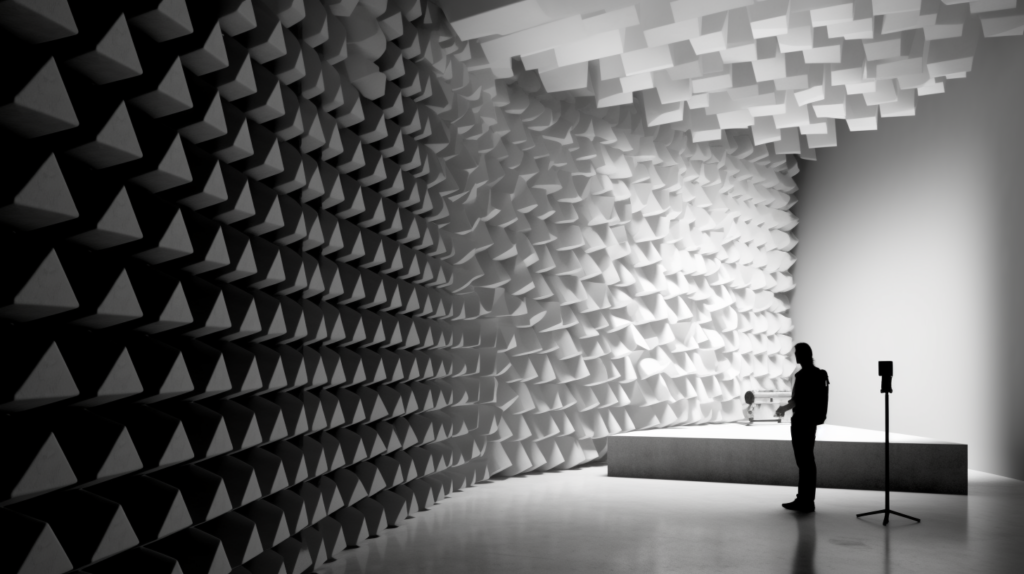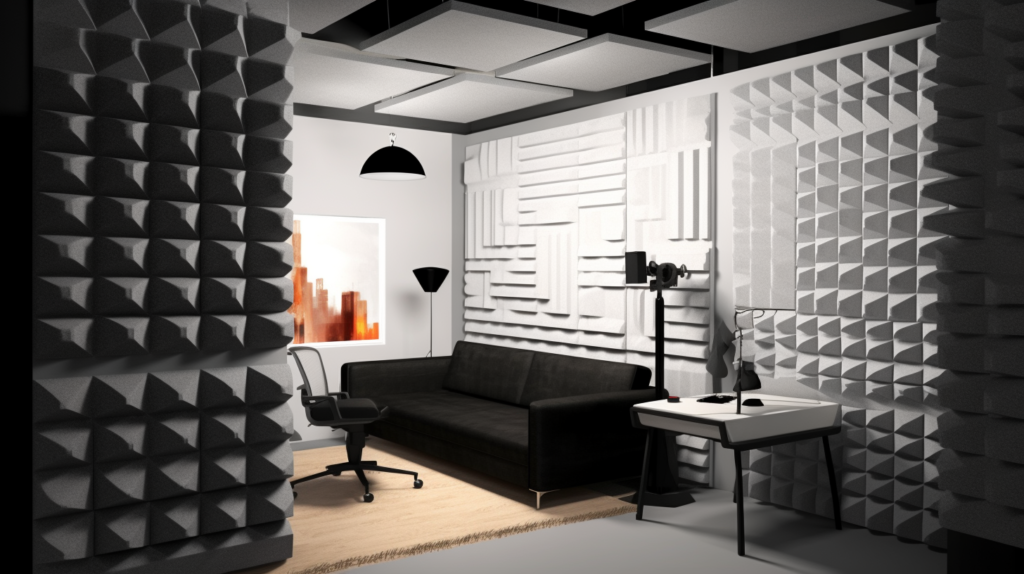Have you ever found yourself staring at a wall of different-shaped acoustic foams, scratching your head and wondering, “Do I really need a specific shape of foam for a specific purpose?” You’re not alone; it’s a question that baffles many when setting up a recording studio.
In the world of sound recording, acoustic foam plays a crucial role. Its primary function is to control and manipulate sound, particularly high-frequency sounds and flutter echo.
While different shapes like wedge and pyramid are available, the big question is whether these shapes serve different purposes, especially in the specialized setting of a recording studio.
If you’re setting up a recording studio or are just curious about the science of sound, understanding the role of different shapes of acoustic foam can be invaluable. So, let’s dive into the nitty-gritty details and unravel this acoustic enigma.
What is Acoustic Foam and Why Should You Care?

Acoustic foam is not just another piece of sponge-like material; it’s a scientifically designed substance with the specific purpose of controlling and manipulating sound.
It plays a particularly crucial role in recording studios where the quality of sound can make or break a recording.
If you’re an artist, a sound engineer, or someone passionate about recording, understanding the role and effectiveness of different shapes of acoustic foam can be invaluable.
In a recording studio, the challenges often revolve around high-frequency sounds and flutter echo. These can distort the quality of a recording, making it less clear and professional.
Acoustic foam helps in mitigating these challenges, but the question remains: does the shape of the foam make a significant difference in such specific scenarios?
As we will discover, while shape can have an impact, it may not be as critical in a recording studio focused on high-frequency sounds.
What Makes Acoustic Foam Unique?

While there are various materials available for soundproofing—a list that includes mineral wool and fiberglass—acoustic foam stands out for several reasons. Primarily made from polyurethane, this foam is both lightweight and highly effective at absorbing sound.
It’s also much easier to install than its heavier counterparts like mineral wool, making it a popular choice for both DIY enthusiasts and professionals.
But what truly sets acoustic foam apart is its versatility. It comes in a variety of shapes and sizes, each claiming to offer specific benefits.
However, when your recording studio’s primary focus is on capturing high-frequency sounds and reducing flutter echo, the unique characteristics of acoustic foam become even more relevant.
The material is engineered to handle these very issues, making it a go-to choice for many in the recording industry.
Does Shape Matter in a Recording Studio?

When you set up a recording studio, you’ll find that there’s no shortage of advice on the best shape of acoustic foam to use. Some will swear by the efficacy of pyramid-shaped foam, while others stand by the wedge shape.
But in a recording studio environment, where the primary issues are high-frequency sounds and flutter echo, the shape may not be as consequential as one might assume.
Let’s consider the science behind sound absorption. Acoustic foam works by providing a surface for sound waves to hit, thus reducing their intensity.
When the concern is high-frequency sounds and flutter echo, the foam, regardless of its shape, performs this function effectively. The shape, therefore, becomes a secondary concern, overshadowed by the inherent sound-absorbing properties of the foam itself.
That being said, it’s not that the shape has no role to play; rather, its impact is less pronounced when the focus is so specific. In this context, factors like the density and thickness of the foam might have more bearing on its performance than its shape.
Wedge and Pyramid Foam: A Closer Look

Given that the shape may not be the most critical factor in a recording studio setting, it’s worth taking a closer look at the most commonly used shapes—wedge and pyramid. The wedge shape is often seen as the ‘all-rounder’ in the world of acoustic foam.
It provides balanced sound absorption and is generally less expensive than other shapes. Its straightforward design also makes it easier to install, making it a popular choice among those who are setting up a studio on a budget.
Pyramid foam, with its multi-angled design, offers a slightly different set of advantages and disadvantages. It’s often touted as being more effective at absorbing higher-frequency sounds due to its increased surface area.
However, for a recording studio concerned primarily with high-frequency sounds and flutter echo, the difference between pyramid and wedge may not be remarkably significant.
Furthermore, pyramid foam is often more expensive and may require a more complicated installation process, factors that could influence your choice.
Specialized Shapes: Are They Necessary?

Beyond wedge and pyramid foam, the market offers even more specialized shapes like egg-crate, spade, and bass traps. Each of these shapes claims to offer unique benefits, targeting specific sound frequencies or offering enhanced sound diffusion.
But when the primary concern is flutter echo and high-frequency sound absorption in a recording studio, the necessity of these specialized shapes comes into question.
Egg-crate foam, for example, is often lauded for its excellent sound diffusion capabilities. While this may be beneficial in a large auditorium or a room with varied acoustic needs, it may not offer significant advantages in a recording studio focused on high-frequency sounds.
The same goes for other specialized shapes; they may offer benefits in a more generalized acoustic environment but may not provide a marked improvement in a setting with specific acoustic needs like a recording studio.
How Does Acoustic Foam Compare to Polyester Acoustic Panels?

When you’re looking for soundproofing options, you might come across polyester acoustic panels as an alternative to traditional acoustic foam. These panels are often used in commercial settings and offer a blend of sound absorption and aesthetic appeal.
However, when it comes to a recording studio where the primary concerns are flutter echo and high-frequency sounds, traditional acoustic foam usually offers more targeted benefits.
Polyester acoustic panels are generally larger and are often used in settings where both aesthetics and acoustics are important. In a commercial space like an office or a café, these panels can offer a dual function.
But in a recording studio, the focus is less on aesthetics and more on specific sound absorption capabilities. Acoustic foam, regardless of its shape, is engineered to deal with high-frequency sounds and flutter echo, making it a more suitable choice for recording studios.
Additionally, acoustic foam is usually more affordable and easier to install, which are significant advantages for a studio setup.
Conclusion
Understanding the role of different shapes of acoustic foam in sound absorption can be a complex topic. Still, when it comes to recording studios with specific needs like tackling flutter echo and high-frequency sounds, the shape may not be the most critical element.
Both wedge and pyramid foams are up to the task, and your choice could be influenced more by budget, ease of installation, and personal preference than by the shape of the foam itself.
In the end, what truly matters is creating an acoustically balanced environment that allows for the best possible sound recording. Whether you achieve this with wedge foam, pyramid foam, or any other shape is secondary to the primary goal: crystal clear sound in your recordings.
Frequently Asked Questions (FAQ)
When it comes to setting up a movie room, the main concern is often creating an immersive audio experience. The good news is that the shape of the acoustic foam may not be as crucial in a movie room setting as it would be in a professional recording studio. In this context, both wedge and pyramid foams can be effective for enhancing the audio experience by reducing flutter echo and absorbing high-frequency sounds. Ultimately, your choice might be influenced more by aesthetic considerations and personal preferences than by the shape of the foam itself. So, in a movie room, you have the flexibility to choose any shape that aligns with your design vision and budget.
what shape of acoustic foam is best for soundproofing
It’s essential to clarify that acoustic foam, regardless of its shape, is not designed for soundproofing. Acoustic foam is primarily used for sound absorption, which reduces echoes and reverberations within a room. It does not block sound from entering or exiting a room, which is what soundproofing aims to do. If your goal is soundproofing, you may need to look into other materials and techniques like using mass-loaded vinyl, resilient channels, or decoupling methods. Acoustic foam can enhance the quality of sound within a space but should not be relied upon for soundproofing purposes.
